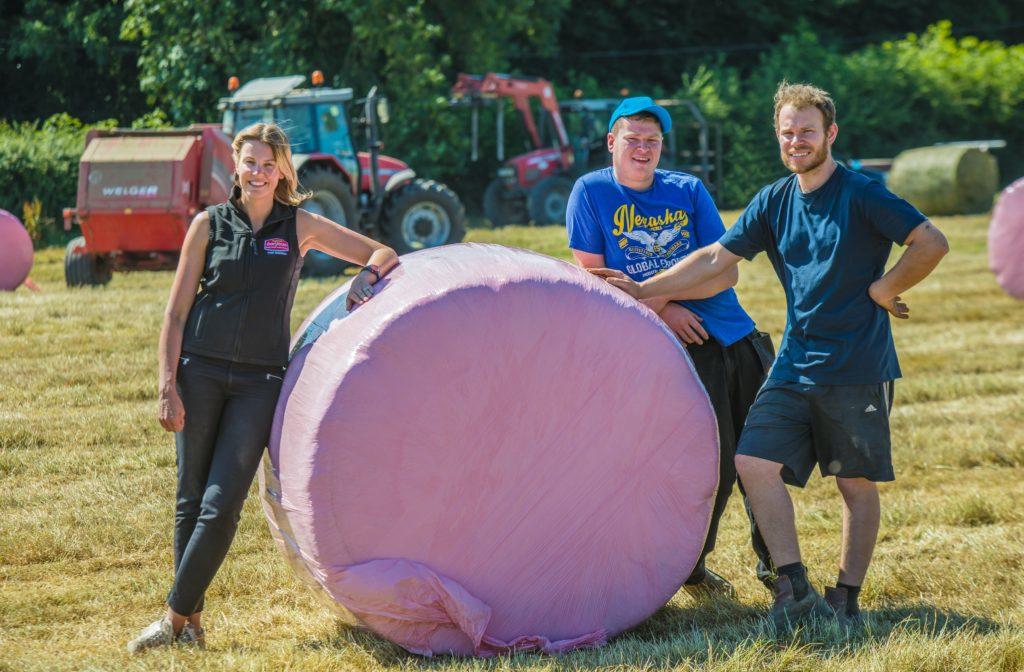Get a 24 hour weather forecast

The principles of making baled silage are the same as pit silage:
1) Remove all air and maintain air-free through to feedout
2) Reduce silage pH (level determined by the extent of wilting)
The feeding value of baled silage is directly related to the characteristics of the grass baled but mould is entirely related to what happens after the bales are wrapped.
Mould is a much bigger problem with bales than pit silage.
Guidelines
1. Grow a quality crop
Grow silage from fields with high levels of ryegrass (reseed 10-15% every year). Apply fertiliser/slurry early, evenly and at the correct rates for high yields and quality.
2. Harvest leafy, digestible grass
Well preserved, palatable baled silage can be made from stemmy grass, but its feeding value will not be high.
3. Wilt mown grass quickly to 25-30% DM
Wilting is important for baled silage facilitating good preservation and preventing effluent production. It also reduces the number of bales (and cost) per acre and makes the bales easier to handle and store.
Your aim when wilting is that the mown crop does not spend more than one night on the ground. This requires good drying conditions, dictating you have some flexibility in harvesting date. Mow your crop after the dew has dried off and spread out in thin layers to increase the speed of wilting.
4. Apply a quality additive as required
A good quality additive (Dairygold recommends Silomax Grass) will protect feeding value and deliver a return on investment in the majority of situations provided it is properly applied (evenly at the correct level). The advent of accurate low volume applicators makes this possible.
An additive is very important where you have unwilted difficult-to-ensile crops. Adequately wilted (to 30%+ DM), very stemmy crops or those with 3% or more sugars should preserve properly without additives.
5. Produce dense, well-shaped bales
Ensure the sward is full width when entering the mouth of the baler – this ensures production of firm and well-shaped bales. This results in heavier but fewer bales per acre, thereby reducing baling and wrapping costs. In addition, well-shaped bales are easier to wrap properly and to handle without causing damage.
6. Wrap bales carefully and adequately
In Ireland, four layers of film are typically used, although in countries such as Sweden six layers are the norm. Six layers should be used for:
7. Handle bales gently
Gentle handling of bales before and after wrapping is essential in order to maintain the shape of the bales and the integrity of the seal provided by the plastic film. Ideally wrap bales at final storage point. This reduces the risk of post wrapping stubble/transporting damage to airtight seal. However, even these unwrapped bales need to be handled gently as rough handling can mis-shape the bales and make them more difficult to wrap perfectly. Transporting unwrapped bales on a spike can readily mis-shape the bales.
Wrap bales as quickly as possible after baling, ideally within 2-3 hours of baling, and any handling of wrapped bales should be within a day of wrapping.
Key point: The importance of gentle handling of bales cannot be over-emphasised. Best practise is to wrap bales at the site of final storage.
8. Storage
Store wrapped bales on a level, smooth, hard surface with good access so the bales can be conveniently retrieved for feeding. Unwilted bales should be stored on the ground (on curved side or flat end) whereas successfully wilted bales can be stored 2 or 3 high (on curved side only) if suitable handling equipment is available.
Ideally bales should be covered (top and sides) in fine-mesh netting to prevent damage during storage. Spacers such as tyres should be used to keep the netting out from the bales. Inspect the bales frequently (weekly) and repair damage immediately.
Key point: Do not stack unwilted bales. Wilted bales should be stacked on their curved side only using suitable handling equipment.
9. Sampling and Analysis
c.20% of cows annual Dry Matter Intake is from silage. Know what feeding value you have saved by sampling and analysing all silage. Target driven feed values:
10. Feeding